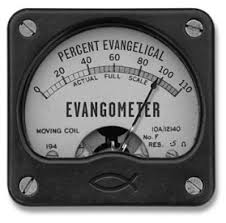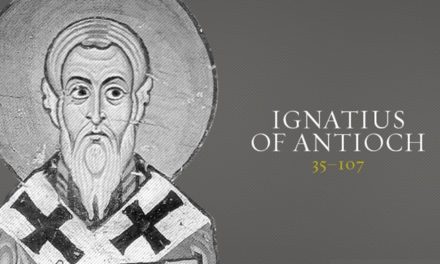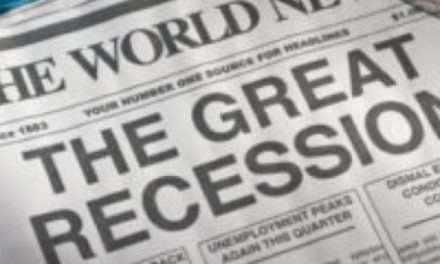This episode is titled Coming Apart
Europe in the late 19th C was recovering from the Napoleonic Wars. War-weary, nations longed for a prolonged peace in which to take a breath, and consider HOW they were going to rebuild from the devastation recent conflicts had left. A plethora of new economic and political theories were available for them to choose from as they rebuilt. Most settled on economic and political ideas that were more liberal toward individual rights. The prosperity that marked Holland became a model for a good part of Europe as they moved to a free-market system. With few exceptions, the governments of Europe adopted modified parliamentary systems.
This is the time when Europe moved from kingdoms to the more modern notion of nation-states. Religious affiliation keying off the Reformation and Counter-reformation often played a part in defining borders. For instance, under the influence of Prussian leadership, Germany was fiercely Protestant while Austria was doggedly Roman Catholic. Belgium was Catholic while The Netherlands were Protestant.
But maybe the most important development that occurred from the mid to late 19th C in Europe was the escalating divide between church and state.
Following the Reformation, in those regions where Protestantism reigned, the church maintained a relationship with the State, much as the Catholic Church had before. But after the French Revolution, things changed. This was due to the emerging power of civil governments no longer beholden to clerical authority. The laisse-faire economics practiced across Europe birthed an economic boom that had a remarkable impact on the way people regarded much more than just economics. While many nations kept a State church subsidized by public funds, there was a boom in free churches supported solely by the offerings of their members. Being economically independent, they didn’t see the need to comply with some overarching ecclesiastical hierarchy. Freedom of thought and the freedom of the individual conscience so exalted by Enlightenment philosophy was linked solidly to the Reformation principle of Sola Scriptura, so that people valued their right to read and interpret the Bible for themselves. It got to the point where the free churches considered themselves as the real bastions of orthodoxy since their doctrine wasn’t tainted by economic interests and the need to endorse the State in order to keep their subsidy.
While Great Britain followed a parallel track to that of the Continent in the 19th C, the Industrial Revolution had a greater impact there. The Industrial Revolution benefitted the middle class and those entrepreneurs who rode its wave, while diminishing the wealth and influence of the old nobility and pulverizing the poor. The too-rapid growth of cities led to overcrowding, slums, and increased crime. The poor lived in miserable conditions and were exploited at work. That led to a mass migration to the United States, Canada, New Zealand, and Australia. It also led to the birth of the Labor Party which became a potent force in British politics. It was in England, against the back-drop of the abuses of the Industrial Revolution, that Karl Marx developed many of his economic theories.
All this influenced the Church in England. During the French Revolution, it held several of the evils that had characterized the worst of the medieval church: Errors such as clerical absenteeism and holding multiple church offices for nothing more than personal gain. Then, a major renewal shook the Church of England. A reform-minded clergy took charge and bolstered by laws enacted by Parliament, were able to roll back the abuses. These reformers where of the Evangelical movement within Anglicanism, Pietists who longed to move away from the high-church magisterialism of Anglicanism to a greater solidarity with Continental Protestantism. A counter-movement responded in the Oxford movement, which produced a kind of Anglo-Catholicism. Heavily influenced by Romanticism and Eastern Orthodoxy, the Oxford movement emphasized the authority of tradition, apostolic succession, and Communion, rather than preaching, as the center of Christian worship.
But it was in the free churches in England that most spiritual vitality was found during the late 19th C. The growth of the middle-class resulted in an surge in membership at free churches. Outreaches to the poor helped alleviate the suffering of tens of thousands. Others worked to enact laws to curb abuse of workers. This was also a time a massive missionary outreach from England. In a desire to help the poor, Sunday Schools were started. Others organized the Young Men’s Christian Association, the YMCA, as well as a women’s version, YWCA. New denominations were born, like the Salvation Army, whose primary focus was to help urban poor.
Methodists, Quakers, and others led in the founding of labor unions, prison reform, and child labor laws. But the most important accomplishment of British Christians during the 19th C was the abolition of slavery. Quakers and Methodists had condemned slavery for yrs. But now, thanks to the leadership of William Wilberforce and other believers, the British government ended slavery. They first ended the slave trade. Then decreed freedom for slaves in the Caribbean. Following that, slavery ended in other English colonies. The British prevailed on other nations to end the slave trade. The British Navy was authorized to use force against slavers. Soon, most Western nations had abolished slavery.
In the Portuguese and Spanish colonies of Latin America in the 19th C, the tension between the immigrants recently arrived from Europe called peninsulares;, and the criollos; descendants of earlier immigrants, was high. The criollos had become wealthy by exploitation of Indians and slaves. They thought themselves more astute at running the affairs of the colony than the recently arrived peninsulares. The problem was, the peninsulares had been appointed to both governmental and ecclesiastical positions by officials back home. Despite the fact that the wealth of the colonies had been dug out by the sweat and toil of the native population and imported slaves, the criollos claimed they were the cause of the wealth. So they resented the intrusion of the peninsulares. Although remaining faithful subjects, they abhorred laws that favored the home country at the expense of the colonies. Since they had the means to travel to Europe, many of them returned home imbued with the new political and economic ideologies of the Continent. The criollos were to Latin America what the bourgeoisie was to France.
In 1808, Napoleon deposed Spain’s King Ferdinand VII, and replaced him with his brother Joseph Bonaparte. Resistance to King Joe centered at Cadiz, where a council called a “junta” ruled in the name of the deposed Spanish monarch. Local juntas were also set up Latin America. The colonies began ruling themselves, in the name of the Spanish king. Then when Ferdinand was restored in 1814, instead of gratitude for those who’d preserved his territories, he reversed all that the juntas had done. When he abolished the constitution the Cadiz junta had issued, the reaction was so strong he had to reinstate it. In the colonies, the criollo resentment was so strong to his iron-fisted attempt to re-assert control, they rebelled. In what is today Argentina, Paraguay, and Uruguay—the junta simply ignored the mandates from Spain and continued governing until independence was proclaimed in 1816. Two years later, Chile followed suit. To the north, Simón Bolívar’s army defeated the Spanish and proclaimed independence for Greater Colombia; which was eventually broken up into Colombia, Venezuela, and Panama. Ecuador, Peru, and Bolivar soon joined the independence parade.
Brazilian independence came about as fallout from the Napoleonic Wars. In 1807, fleeing Napoleon’s armies, the Portuguese court took refuge in Brazil. In 1816, João [joo-auo] VI was restored to rule but showed no desire to return to Portugal until forced to 5 years later. He left his son Pedro as regent of Brazil. When HE was called back to Portugal, Pedro refused and proclaimed Brazilian independence. He was crowned Emperor Pedro I. But he was never really allowed to rule as his title implied. He was forced to accept a parliamentary system of government.
Events in Mexico followed a different course. The criollos planned a power-grab from the peninsulares but when the conspiracy was discovered, Father Miguel Hidalgo y Costilla, proclaimed Mexican independence on Sept 16, 1810 at the head of a motely mob of 60,000 Indians and mestizos—persons of mixed Indian and Spanish blood. When Hidalgo was captured and killed, he was succeeded by the priest José María Morelos. The criollos regained power for a time, but under the leadership of Benito Juárez, native Mexicans re-asserted control. Central America, originally part of Mexico, declared independence in 1821, and later broke up into Guatemala, El Salvador, Honduras, Nicaragua, and Costa Rica.
Haiti’s independence was another result of the French Revolution. As soon as the French Revolution deprived the white population on the island of military support, the majority blacks rebelled. Independence was proclaimed in 1804, acknowledged by France in 1825.
Throughout the 19th C, the overarching ideological debate in Latin America was between liberals and conservatives. Leaders of both groups belonged to the upper class. And while conservatives tended to be located in a landed aristocracy, liberals found their support among the merchants and intellectuals in urban centers. Conservatives feared freedom of thought and free enterprise while those were cardinal virtues for liberals, because they were modern and were suited to their interests as the merchant class. While conservatives looked to Spain, liberals looked to Great Britain, France, and the USA. But neither group was willing to alter the social order so lower classes could share the wealth. The result was a long series of both liberal and conservative dictatorships, of revolutions, and violence. By the turn of the century, many agreed with Bolívar that the continent was ungovernable. The Mexican Revolution seemed to make the point. It began in 1910 and led to a long period of violence and disorder that impoverished the land and caused many to emigrate.
Throughout this colonial period in Latin America, the Church was under Patronato Real = Royal Patronage. The governments of Spain and Portugal appointed the bishops for the colonies. Therefore, the higher offices of the church were peninsulares while criollos and mestizos formed lower clergy. While a few bishops came to support the cause of independence, most supported the crown. After independence, most returned to Spain, leaving their seats empty.
Now, we might think, “Well, that’s not difficult to sort out. Why didn’t those local sees just appoint their own bishops?” They wanted to, but in the tussle between Spain claiming the right to appoint bishops and the locals claiming the right, the Pope wavered. He did so because Spain was still a much-needed ally, while the new nations of Latin America were a substantial part of the Catholic flock. Papal encyclicals tried to walk a thin line between honoring European monarchs while at the same time culling back to the Vatican the ability to name its own bishops. It was a political sticky wicket that dominated the diplomatic scene for years.
The attitude of the lower clergy, again, made up mostly of criollos and mestizos, contrasted with that of the bishops who tended conservative. In Mexico, three out of four priests supported the rebellion. Sixteen out of the twenty-nine signatories of Argentina’s Declaration of Independence were priests.
You may remember the Liberation Theology movement popular across Latin America in the early 80’s. It was led largely by Roman Catholic priests. They followed in the footprints of earlier priests from a century before.





